Mastering the Art of Subtracting Fractions
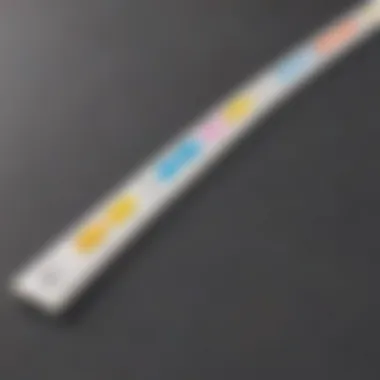
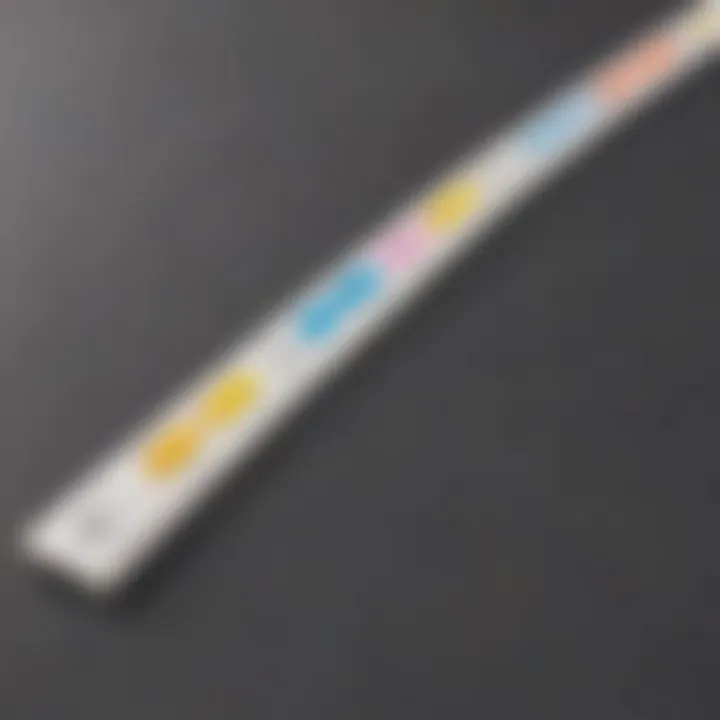
Intro
Understanding subtracting fractions can feel like trying to find your way through a dense fog. However, with a bit of guidance, this tricky topic can be clarified, much like seeing a light at the end of the tunnel. Subtracting fractions is a vital skill that children need to grasp as they build their foundation in mathematics. It’s not just about knowing how to compute; it’s about understanding the relationship between numbers, and that’s where the real magic happens.
In this guide, we will break down the main concepts and processes involved in fraction subtraction. You’ll find easy-to-follow steps that children can relate to, which can make the learning journey less daunting. Let’s dive into the nitty-gritty of fractions, unveiling some practical applications that make this topic relevant to their everyday lives.
Creative Activities
Learning to subtract fractions doesn't have to be limited to textbooks and worksheets. Engaging students through creative activities can enhance their understanding and retention of the concept. Here are some colorful and engaging craft ideas, complete with detailed instructions:
Craft Ideas:
- Fraction Pizza Party: Create pizzas using paper plates divided into different fraction slices, then practice subtracting using toppings.
- Fraction Cards: Design cards with various fractions on them; students can shuffle and pick pairs to practice subtraction.
Step-by-Step Guides:
- Fraction Pizza Party:
- Fraction Cards:
- Gather paper plates and markers.
- Draw circles representing pizzas.
- Use markers to divide each pizza into slices representing different fractions (e.g., 1/2, 1/3).
- Add toppings to demonstrate subtraction (e.g., if you take away 1/3 sausage, color over that slice).
- Take index cards and write fractions on each.
- Shuffle them and split into two piles.
- Have students draw one from each pile and subtract.
Educational Value:
Utilizing hands-on activities like these can make learning fun and relatable. They allow children to visualize fractions in a tangible way, making it easier to grasp subtraction of these numbers. Engaging in such crafts also encourages creativity, critical thinking, and teamwork, all of which are valuable skills in learning.
Fun Quizzes
Quizzes can serve as a fantastic way to assess understanding and reinforce knowledge. ElemFun offers an array of engaging quizzes for students to test their skills.
Quiz Topics:
- Basic fraction subtraction problems.
- Word problems involving fractions in real-life contexts.
- Advanced fraction operations to challenge more capable students.
Question Types:
- Multiple choice queries that allow for quick feedback.
- Fill-in-the-blank questions that test recall.
- Scenario-based questions that encourage application of knowledge.
Knowledge Reinforcement:
These quizzes don’t just provide a way to measure a child’s grasp of subtraction; they create an interactive environment to build confidence and familiarity with the material. Quizzes help encourage a positive association with learning, which can greatly enhance retention.
Fact-Based Articles
To further broaden one's understanding, numerous fact-based articles are available that break down the intricacies of fractions in a fun and engaging manner.
Topics:
- The history of fractions and how they came to be used.
- Real-life applications of fractions in various fields, like cooking, construction, and finance.
Engaging Content:
These articles present information through stories, examples, and visuals that capture young readers’ interests. When kids can relate fractions to their experiences, they tend to remember the concepts better.
Foreword to Fractions
Fractions are a fundamental part of mathematics that many people first encounter in their early school years. Whether in simple recipes or sharing a pizza, understanding fractions lays the groundwork for more advanced math. In this section, we will explore what fractions are, the different types that exist, and why grasping these concepts is essential for mastering subtraction, particularly in fractions.
It's worth noting that fractions express parts of a whole. They can seem daunting at first, but once you dive into their definition and types, the abstract becomes tangible, and as we move forward, you'll see how crucial they are for everyday situations.
Definition of Fractions
The essence of fractions can be broken down into two main components: the numerator and the denominator. The numerator tells how many parts we have, while the denominator indicates into how many parts the whole is divided. For instance, in the fraction ( \frac34 ), 3 represents the parts we possess from a whole divided into 4 equal segments.
Understanding this definition is not only important for operations involving fractions, but also for visualizing their usage in everyday life. Be it measuring ingredients or calculating distances, fractions pop up everywhere, making them highly relevant for learners.
Types of Fractions
Knowing the different types of fractions is like having the right tools in your toolbox. Each type serves its purpose, and understanding these types helps in applying them accurately in various mathematical situations.
Proper Fractions
Proper fractions are characterized by having a numerator smaller than their denominator. A common example is ( \frac25 ). This type of fraction represents a value less than one. Proper fractions are beneficial for elementary math, as they help students grasp fundamental concepts without being overwhelmed by larger values. One unique feature of proper fractions is their ease of visualization, making it simpler for students to conceptualize them as parts of a whole.


Improper Fractions
In contrast, improper fractions have a numerator that is equal to or greater than the denominator, such as ( \frac54 ). This type signifies values greater than one and provides a bridge to understanding mixed numbers. Improper fractions are prevalent in more complex mathematics, allowing students to appreciate how numbers can combine in various forms. Their advantage lies in introducing students to the idea that fractions can represent more than just part of a whole, paving the way for a richer understanding of numbers.
Mixed Numbers
Finally, mixed numbers combine whole numbers and fractions, like 1 ( \frac12 ). They resonate well with learners as they integrate whole numbers—which many find more intuitive—into the fractional world. This blending allows for easier calculations in subtraction and addition involving fractions. However, mixed numbers can sometimes confuse students when transitioning to improper fractions. Yet, their dual nature offers a fantastic opportunity for exploration in various contexts, like measuring angles or in cooking recipes.
In summary, fractions are not just abstract numbers; they represent real-world relationships. Understanding their types and definitions allows us to tackle more complex operations such as subtraction efficiently. With this foundational knowledge, learners will be better prepared to engage with the more nuanced aspects of fraction subtraction that will be discussed later.
The Concept of Subtraction in Mathematics
Subtraction is more than just taking a number away from another; it's a foundational element in mathematics that can lead to various understandings and applications in everyday life. Especially when it comes to fractions, grasping the concept of subtraction can illuminate how numbers interact, differentiate, and relate to one another. It’s essential for solidifying later math skills, such as algebra and geometry, making it a pillar of children's mathematical education.
One of the remarkable things about subtraction is how it builds on intuition. When children learn to subtract, they are not merely performing calculations; they are understanding concepts like difference, loss, and the relationship between parts and wholes.
Understanding Subtraction
At its core, subtraction is about finding out how much less one number is in comparison to another. To illustrate, let’s consider a simple example involving objects—imagine you have 10 apples and you give away 4. You are then left with 6. It’s easy to visualize this with actual apples, but the learning doesn’t stop there. The process begins to extend, where one can apply it to more abstract forms, such as fractions.
In the case of fractions, subtraction requires special attention to their components—the numerator and denominator. Children first need to understand what these terms mean before they can successfully execute subtraction.
It's also worth noting that subtraction can be seen in various contexts, such as removing or partitioning equally— a concept that might come in handy when planning things like sharing treats or distributing tasks. Hence, relating subtraction to real-life scenarios can cater to the cognitive development of students, urging them towards practical applications.
Subtraction of Whole Numbers
Subtraction of whole numbers serves as a stepping-stone to successfully tackle fractions. When students subtract whole numbers, they typically use the "take away" perspective—for instance, if you have 8 and subtract 3, you are literally removing 3 from 8, resulting in 5.
This intuitive understanding evolves when students approach fractional subtraction. Whole numbers are often more straightforward, providing a solid grounding in subtraction skills.
To further echo the kinship between whole numbers and fractions in subtraction, consider the following:
- Practice Makes Perfect: Repeatedly working with whole numbers builds confidence and sharpens skills.
- Visual aids: Using number lines or counters reinforces understanding.
- Word Problems: Asking children to explore real-life scenarios using whole numbers cultivates a richer understanding of subtraction principles.
Overall, focusing on the concept of subtraction in mathematics offers a resilient framework for future mathematical learning. Recognizing how subtraction functions with whole numbers sets the stage for them to embrace more complex concepts involving fractions. Children learn to see math not just as a collection of formulas but as a tool for understanding the world around them.
What Does It Mean to Subtract Fractions?
Subtracting fractions is a crucial skill that goes beyond mere numbers on a page. It's about understanding how quantities interact and how to manage differences in parts of a whole. This concept can feel a bit elusive at first, especially for young learners. However, grasping the idea of subtracting fractions can open doors to a better understanding of mathematics as a whole. It's more than just writing down numbers and getting a result; it’s about visualizing differences and applying them to everyday life.
Visualizing Fraction Subtraction
Visualizing fraction subtraction can help learners comprehend what they are really doing when they subtract fractional parts. Imagine two pie slices where one slice represents ( \frac34 ) of a pie and the other slice represents ( \frac12 ). To subtract these, one could imagine cutting both pies into equal slices first. That way, the visual representation becomes clearer and it becomes easier to see how many slices remain after taking away a certain amount.
- For example:
- Convert ( \frac34 ) to ( \frac68 ) and ( \frac12 ) to ( \frac48 ).
- Now it’s simple to see that ( \frac68 - \frac48 = \frac28 ), which can be simplified to ( \frac14 ).
Using models, such as number lines or pie charts, can provide strong visual cues for students, helping them see the subtraction process as more than just a calculation.
"Understanding the visual aspect of fractions enriches students' insights into how they relate to real-world contexts."
Real-Life Applications of Fraction Subtraction
Understanding how to subtract fractions has useful applications in everyday life. Take cooking as an example. Recipes often require precise measurements, and knowing how to subtract fractions can save a dinner from turning into a disaster. Imagine a recipe that calls for ( \frac34 ) cup of flour and you're trying to reduce it down to one serving, needing to subtract ( \frac14 ). This is where the skill proves essential.
Here are a few real-life situations where subtracting fractions comes into play:
- Cooking: Adjusting ingredient amounts when scaling recipes up or down.
- Grocery Shopping: Calculating discounts and understanding package sizes when determining how much of a product you need to buy.
- Crafting: Measuring materials when creating things like a quilt or an art project.
In these scenarios, the ability to accurately subtract fractions ensures that the outcome is not only correct but also aligned with the intended goals of the task at hand. Recognizing these small but significant moments can help foster greater enthusiasm for learning fractions among elementary school children.
Step-by-Step Guide to Subtracting Fractions
When it comes to subtracting fractions, having a structured approach can make all the difference. This section aims to provide a clear pathway for anyone grappling with the intricacies of fraction subtraction. For students, it's vital to grasp that learning these steps not only simplifies the problem but also builds a strong foundation for more complex math topics later on. Being methodical in this process can reduce mistakes and increase confidence. Let's break this down into smaller, digestible steps to aid comprehension and retention.
Finding a Common Denominator
The first step in subtracting fractions involves finding a common denominator. This is crucial since fractions can only be subtracted directly when they share the same bottom number, or denominator. Let’s say you want to subtract 1/4 from 3/8. To achieve this, you first need to determine a common denominator, which in this case is 8.
- Why is it Important? A common denominator ensures that the fractions represent the same-sized pieces, making subtraction straightforward.
- How to Find It: Sometimes it’s as simple as identifying the least common multiple (LCM) of the denominators. For 4 and 8, it's clear that 8 is the common denominator. You can convert the fractions to have the same denominator as follows:
- Convert 1/4: 1/4 = 2/8
- Thus the problem now reads 2/8 - 3/8.
This transformation sets the stage for a seamless subtraction process.

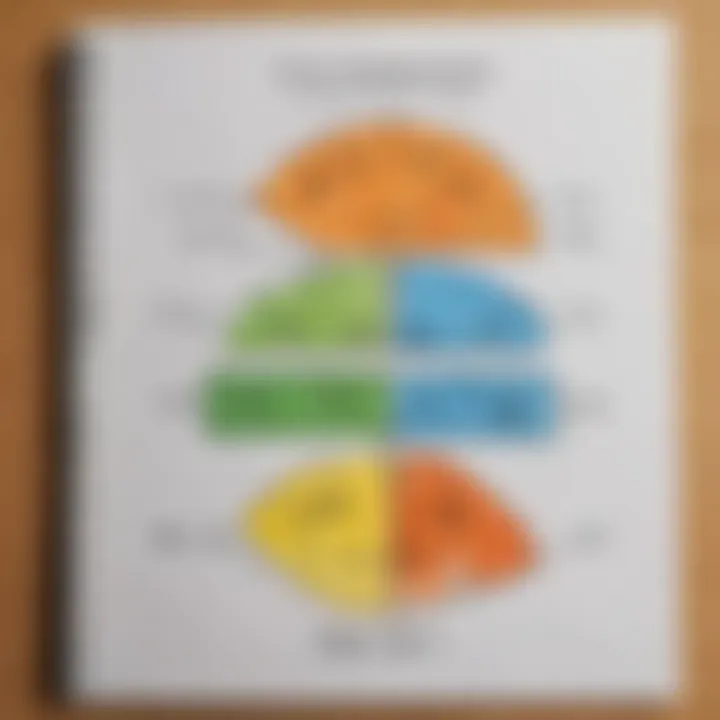
Subtracting the Numerators
With the fractions sitting on the same denominator, the next step is to subtract the numerators while keeping the denominator intact. Here’s where many students might hit a snag, but remember it's just basic arithmetic!
Using the example above:
- Current Fraction Setup: 2/8 - 3/8
- Subtracting: You take the numerators (2 and 3) and subtract them: 2 - 3 = -1.
Now don’t panic about the negative sign; it's a part of the equation! The new fraction is now -1/8. This shows that the result is less than zero, which is perfectly acceptable in math. Just like a fish out of water, sometimes results can seem strange but are completely valid.
Simplifying the Result
The final step in our subtraction journey is simplification. It’s important to present answers in their simplest form.
- Is -1/8 Simplified? In this case, -1/8 is already in its simplest form since both the numerator and the denominator can't be reduced any further.
- When to Simplify: If you happen to end up with a fraction such as 4/8, that's a different story. You can simplify that one since both 4 and 8 can be divided by 4, leading you to 1/2.
Simplifying is like cleaning up your workspace; it can help you see everything more clearly and make your final answer more appealing!
Example Problems
Understanding subtracting fractions entails immersing oneself in practice through example problems. These examples serve as a crucial bridge between theory and application, allowing learners to grasp the essential concepts and methods outlined earlier in the guide. By working through practical scenarios, students bolster their comprehension and gain hands-on experience that can be invaluable in both educational settings and everyday situations.
One of the specific elements to consider is the diversity of problems available for practice. This variety encourages learners to approach subtraction with confidence, tackling both simpler fractions and more complex mixed numbers. The benefits extend beyond just mastering the mechanics of subtracting fractions; students develop critical thinking skills as they strategize how to find common denominators or simplify their results.
Benefits of Example Problems
- Reinforcement of Learning: Engaging with examples solidifies the theoretical knowledge gained.
- Exposure to Different Scenarios: Varied problems prepare students for real-world applications.
- Skill Development: Working through problems enhances problem-solving and analytical skills.
Considerations When Practicing
- Start Simple: Begin with problems that use like denominators to build confidence.
- Progress Gradually: Move to more complex examples only when comfortable with simpler cases.
- Encourage Self-Check: After performing a subtraction, students should check their work to ensure accuracy.
"Practice does not make perfect. Only perfect practice makes perfect." - Vince Lombardi
In the following sections, we will explore both simple fraction subtraction and the unique challenges associated with subtracting mixed numbers, highlighting the importance of these examples in fostering a solid understanding of the topic.
Simple Fraction Subtraction
Subtracting simple fractions involves straightforward numerical operations, primarily focusing on cases where the denominators are already the same. For instance, consider the fractions 3/8 and 2/8. Here’s how you can approach it:
- Identify the Fractions: 3/8 and 2/8 are both simple fractions with matching denominators.
- Subtract the Numerators: Take the top numbers, or numerators, and subtract them: 3 - 2.
- Result: The outcome is 1, so the new fraction is 1/8.
This process clearly demonstrates basic subtraction with fractions, providing a solid foundation for learners.
Subtraction Involving Mixed Numbers
Subtracting mixed numbers introduces a bit more complexity, as these numbers consist of both a whole number and a fraction. For example, consider 3 1/4 minus 1 2/3. The process involves several steps:
- Convert Mixed Numbers to Improper Fractions: 3 1/4 becomes 13/4 (3 multiplied by 4 plus 1), and 1 2/3 becomes 5/3 (1 multiplied by 3 plus 2).
- Find a Common Denominator: Here, the least common denominator for 4 and 3 is 12.
- Convert Each Fraction: Convert 13/4 to 39/12 (by multiplying the numerator and denominator by 3) and 5/3 to 20/12 (by multiplying by 4).
- Subtract the Numerators: Now subtract: 39/12 - 20/12 equals 19/12.
- Convert Back to Mixed Number: Thus, 19/12 equals 1 7/12 when converted back.
Engaging with mixed numbers requires learners to utilize various skills, from converting forms to operating with differing denominators, thus promoting a deeper understanding of fractions and their interaction.
Through these example problems, learners can approach the world of fractions with clarity and confidence, ensuring a well-rounded mathematical foundation.
Common Mistakes to Avoid
Understanding how to subtract fractions is crucial for elementary school children, and avoiding common pitfalls can significantly enhance their proficiency. Mistakes often arise from simple oversights, miscalculations, or misconceptions about the nature of fractions. This section outlines some frequent errors and the importance of being aware of them in the process of mastering fraction subtraction.
Overlooking Common Denominators
One major error students make is overlooking the need for a common denominator. Fractions can only be subtracted when they share the same denominator, which serves as the baseline for comparing their sizes. If a student tries to subtract fractions with different denominators without making them compatible, they risk obtaining an incorrect answer.
Consider this situation: if a child is tasked with subtracting 1/4 from 1/2, they might jump straight into the subtraction, which leads to confusion. The fractions 1/4 and 1/2 can't be directly compared because they have different denominators. A child would need to find a common denominator first.
To avoid this error, the following steps should be emphasized:
- Identify the denominators: Recognizing the denominators in each fraction is the first step.
- Find the least common denominator (LCD): This ensures that both fractions can be expressed in terms of the same denominator.
- Convert the fractions: Adjust each fraction so that they share this common denominator.
- Perform the subtraction: Once the denominators match, the numerators can be subtracted, and the result can be simplified if necessary.
By focusing on these steps, children can build a solid foundation in their understanding of fractions, fostering both accuracy and confidence in their calculations.
Errors in Numerator Calculation
Another prevalent mistake involves inaccuracies in the calculation of numerators during the subtraction process. Even when students correctly identify a common denominator, they might miscalculate the numerators, which can lead to an incorrect final answer.
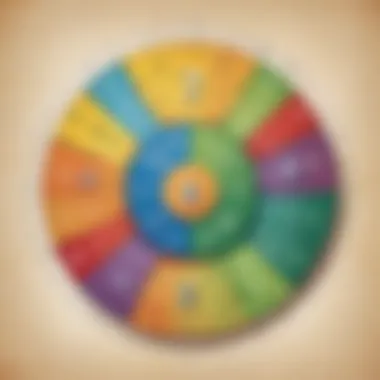
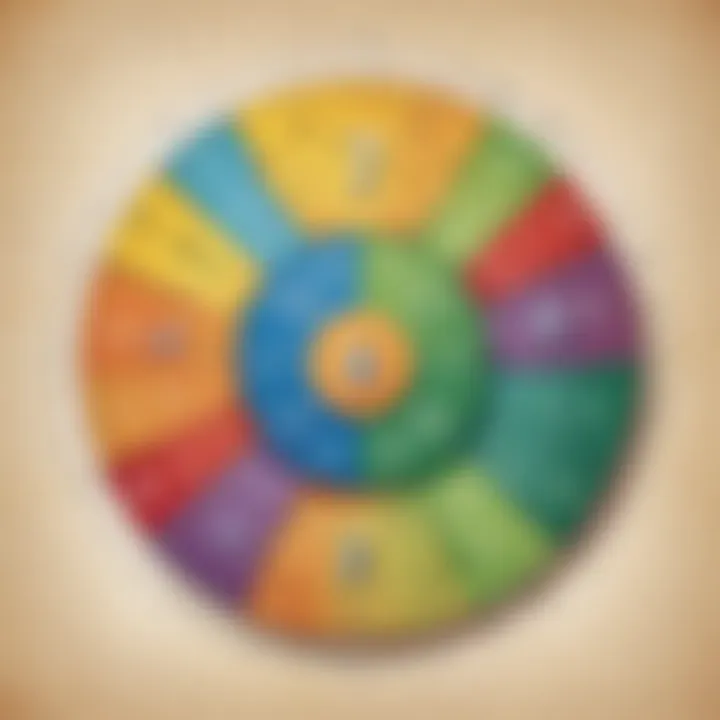
Taking a straightforward example: when subtracting 3/5 from 4/5, students may simply subtract the numerators, thinking it’s just a matter of taking 4 minus 3. Sometimes, they might forget to carry over the negative signs or confuse which number is larger. This can lead to erroneous results.
To help students avoid these blunders, here are some useful tips:
- Double-check calculations: Encourage students to validate their answers through re-calculation.
- Use visual aids: Diagrams or fraction bars can help in visualizing the subtraction process, which clarifies which numerators to subtract directly.
- Practice with varied examples: The more exposure they receive to different scenarios, the more adept they become at identifying potential errors.
Frequent review and practice not only solidifies understanding but also significantly aids in minimizing mistakes with numerators.
Understanding and recognizing these common pitfalls will enable students to confidently tackle fraction subtraction. Knowledge of these mistakes provides a clear pathway to avoid them, ensuring a more effective learning process.
Interactive Learning with Subtraction Apps
In today's tech-driven world, learning has taken a big leap with the introduction of educational apps. Particularly for a skill like subtracting fractions, utilizing these tools can make a world of difference for elementary school students. The interactive nature of apps engages learners in a way that traditional methods may not. Students often find these applications more exciting and relatable, encouraging them to practice and hone their skills without even realizing they are doing math.
The use of interactive learning apps provides several specific advantages that can greatly benefit young learners:
- Engagement: Unlike static worksheets, apps often use games or quizzes that make the learning process feel like play. Students can receive instant feedback on their performance, which can motivate them to keep improving.
- Visual Understanding: Many apps incorporate visual aids like pie charts or number lines. This helps students grasp the abstract concept of fractions in a more tangible way. Seeing fractions in real-time facilitates comprehension.
- Personalized Learning: With apps, students can learn at their own pace. This flexibility allows children who might struggle with subtraction to take the time they need to grasp the concepts.
- Accessibility: Many educational apps can be accessed on multiple devices, making it easy for students to practice at home or on-the-go. This convenience supports continuous learning beyond the classroom.
Integrating these interactive tools into the learning routine helps solidify understanding while keeping students interested.
Benefits of Using Educational Apps
When it comes to subtracting fractions, the choice of educational apps is crucial. Below are some benefits that make these applications particularly effective:
- Instant Feedback: Students immediately know whether their answers are correct, allowing them to learn from their mistakes right away.
- Gamified Learning: Features like rewards and levels encourage students to master fractions. This method keeps the learning fresh and increases motivation.
- Varied Learning Styles: Different apps cater to visual, auditory, and kinesthetic learners, ensuring that all students can benefit from the materials tailored to their preferred learning style.
- Tracking Progress: Parents and educators can track how students are doing, offering insights into areas that may need additional focus or review.
Recommended Apps for Subtracting Fractions
There are numerous educational apps available, but not all are created equal. Here are some recommended ones that focus on subtracting fractions:
- SplashLearn: This app provide a fun way for children to practice math skills, including fractions. The interactive exercises come with visual aids to deepen understanding.
- Khan Academy Kids: This comprehensive learning tool offers various exercises on fractions, including subtraction. It tracks progress and adjusts the difficulty based on the learner’s performance.
- Math Playground: This site features numerous games targeting fraction subtraction, allowing students to learn through play while developing their skills.
- Prodigy Math: This game-based app covers a range of math topics, including subtracting fractions, making it a favorite among students.
By utilizing these resources, students can enjoy a more enriched learning experience, fostering a deep and lasting comprehension of subtracting fractions.
Integrating Subtraction of Fractions into Curriculum
Understanding how to subtract fractions is not just a math requirement; it's a vital skill students carry with them throughout their lives. Integrating this topic into educational curricula ensures that students grasp foundational concepts that aid in advanced mathematical learning. Fractions can often be intimidating for students, but when blended into the curriculum properly, they can see the relevance of these operations in real-world scenarios.
By systematically introducing subtraction of fractions, educators help build a robust mathematical mindset. This fosters not just proficiency in numbers but also critical thinking skills. Here are some key elements to consider when integrating this topic:
- Relevance to Daily Life: Understanding how to subtract fractions helps students develop practical life skills, such as cooking or budgeting.
- Building Confidence: Mastery of this skill can boost students' confidence in math, encouraging them to tackle even more complex problems in the future.
- Interconnected Learning: Learning how to subtract fractions lays the groundwork for further studies in algebra, ratios, and proportions.
Incorporating subtraction of fractions also comes with certain benefits:
- Engagement: Lessons can be interactive, incorporating games and activities that make learning fun.
- Differentiated Instruction: Teacher can tailor their methods to various learning styles, ensuring that every student has the chance to succeed.
- Continuous Assessment: Through practical assessments, educators can identify which students need more help and adjust their approaches accordingly.
"Integrating basic math operations into the curriculum is like planting seeds for future growth in a child’s educational journey."
Key Learning Objectives
Learning objectives are not just a way to measure educational success; they also provide direction for both students and teachers. Here are some principal learning goals for subtraction of fractions:
- Understanding Concepts: Students should recognize what fractions represent and how subtraction operates within this context.
- Finding Common Denominators: Students learn the importance of common denominators when subtracting fractions, an essential concept that will appear frequently in their math careers.
- Problem-Solving Skills: Engaging with real-life problems involving fraction subtraction enhances their analytical capabilities.
- Confidence in Math: By achieving these objectives, students can approach math with greater assurance, feeling empowered to face more challenging topics.
Incorporating these learning objectives gives students a structured path to understand subtraction of fractions more thoroughly.
Teaching Strategies
Various teaching strategies can enhance the delivery of fraction subtraction lessons. Here are some effective methods:
- Hands-On Activities: Using physical objects like pie charts or fraction strips can make the concept of subtraction tangible.
- Visual Aids: Charts illustrating the steps of fraction subtraction help clarify processes and enhance visual learners’ understanding.
- Group Work: Collaborating in small groups promotes discussion and peer learning, which can be invaluable in grasping challenging concepts.
- Technology Integration: Leveraging apps and online resources can provide interactive ways for students to learn and practice. Apps often come with engaging functionalities that draw students into the learning process.
Employing these strategies not only makes learning enjoyable but also reinforces key mathematical concepts through various approaches, meeting students where they are. By embedding these tactics into teaching practices, educators can look forward to watching their students excel in subtracting fractions.
End
Navigating the world of subtracting fractions doesn't have to be a daunting task. The topics we've discussed build a solid foundation for understanding not just how to subtract fractions, but why it matters. Mastery of subtracting fractions helps children develop problem-solving skills necessary for more complex math concepts later on.
Recap of Key Concepts
Let's revisit some of the crucial takeaways from this guide:
- Understanding the Basics: We began by defining fractions and recognizing various types—proper, improper, mixed numbers. Knowing these basics can shape a student's approach to more advanced concepts in mathematics.
- The Subtraction Process: We broke down the steps for subtracting fractions, highlighting the importance of finding a common denominator. This is a non-negotiable step that ensures accuracy in calculations.
- Common Pitfalls: We examined common mistakes students may encounter, like overlooking common denominators or miscalculating numerators. Recognizing these traps can save time and frustration.
- Techniques and Tools: Integrating educational apps and interactive techniques into the learning process can make fraction subtraction engaging and less intimidating.
This recap emphasizes not only the mechanics of subtracting fractions but also the strategic thinking involved, highlighting the necessity of a strong mathematical foundation.
Encouragement for Continued Learning
As students and educators ponder over the knowledge shared in this article, it’s vital to emphasize that learning is a journey, not a race. Mastery of subtracting fractions will unfold over time with practice and persistence. The beauty of mathematics lies in its ability to connect concepts.
Encourage students to explore additional resources, whether that be through educational websites like Wikipedia, Britannica, or even communities found on Reddit to foster their learning. This aimless wander through numbers and concepts can not only enhance their understanding but also inspire a passion for mathematics. As they progress, developing confidence in using fractions will prepare them to tackle more challenging topics with ease.







